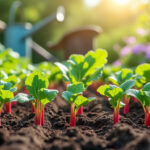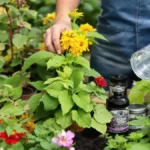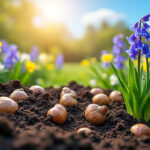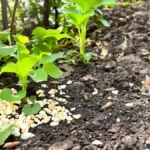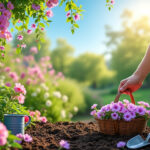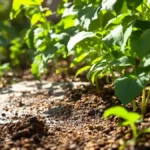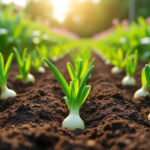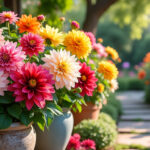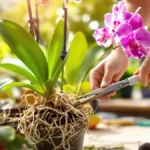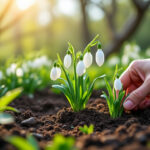Creating a beautiful landscape doesn’t have to mean depleting precious water resources. Drought-resistant landscaping, featuring an array of vibrant plants, serves as an ideal solution for eco-conscious homeowners desiring to conserve water while maintaining aesthetic appeal. As water conservation becomes increasingly critical, understanding which plants flourish in arid conditions not only enhances local ecosystems but also contributes to sustainable gardening practices. Discover essential drought-tolerant plants that promise to transform any garden into an eco-friendly haven.
- Drought-Resistant Plants: The Best Choices for Water Conservation
- Characteristics of Drought-Tolerant Species
- Benefits of Xeriscaping
- Top Drought-Resistant Plants for Various Landscapes
- Water-Saving Landscaping Practices
- Frequently Asked Questions
Drought-Resistant Plants: The Best Choices for Water Conservation
When selecting plants for a drought-smart landscape, focusing on native plants is crucial. These species have evolved to thrive in local conditions, requiring minimal care and water. Moreover, they provide essential habitats for wildlife and pollinators.

Characteristics of Drought-Tolerant Species
Drought-tolerant plants tend to exhibit several unique characteristics that aid in their survival under water-scarce conditions:
- Deep root systems for accessing moisture from deeper soil layers 🌱
- Fleshy leaves or stems that store water 💧
- Waxy leaf surfaces that reduce evaporation 🌞
- Gray or silver foliage that reflects sunlight 🌕
Benefits of Xeriscaping
Implementing xeriscape principles in landscape design results in numerous advantages:
| Benefit | Impact |
|---|---|
| Reduced Water Use | 30-70% less than traditional landscaping 🚰 |
| Low Maintenance | Less time spent mowing and watering ⏳ |
| Enhanced Soil Health | Promotes soil stability and prevents erosion 🌍 |
| Increased Wildlife Habitats | Supports local ecosystems 🦋 |
What is structural landscaping and why it matters in 2025?
Top Drought-Resistant Plants for Various Landscapes
Here is a selection of striking drought-resistant plants ideal for integrating into a sustainable landscape.
- Lavender (Lavandula spp.) – A fragrant favorite, thrives in hot, dry conditions with minimal watering requirements. 🌿
- Purple Coneflower (Echinacea purpurea) – Attracts pollinators and tolerates a variety of soils. 🐝
- Creeping Thyme – A low-growing ground cover requiring very little water while providing vibrant flowers. 🌸
- Agave – Drastically reduces water consumption while offering striking architectural interest in landscapes. 🏜️
- Russian Sage (Salvia yangii) – Flourishes in dry conditions, showcasing beautiful purple blooms. 💜
Water-Saving Landscaping Practices
Effective water-wise landscaping involves more than just plant selection. Here are some practices to adopt:
- Install a drip irrigation system for targeted watering 💦
- Apply mulch to retain soil moisture and suppress weeds 🌾
- Group plants with similar water needs together for efficient irrigation management 🌱
Frequently Asked Questions
What is xeriscaping?
Xeriscaping is landscaping designed to reduce or eliminate the need for supplemental water. It incorporates drought-resistant plants and aims to create an attractive outdoor space using water-efficient practices.
Which plants are best for a drought-tolerant garden?
Some top choices include lavender, agave, coneflowers, and sedum, all capable of thriving in arid conditions.
How much water do drought-resistant plants need?
Once established, drought-resistant plants typically require minimal watering, around 12-15 inches of water annually, depending on the plant species and local climate conditions.
Can drought-resistant landscaping save money?
Yes, implementing water-efficient landscaping can significantly lower water bills by reducing water usage by 30-70% compared to traditional gardens.
Is it necessary to fertilize drought-resistant plants?
While some drought-tolerant plants thrive in poor soil conditions, incorporating organic matter during planting can promote healthy growth. Regular fertilization is often unnecessary.
Investing in drought-resistant landscaping not only contributes to individual gardens but supports broader ecological goals as well. From water conservation to supporting local wildlife, these sustainable practices promise a flourishing landscape with minimal resources.


